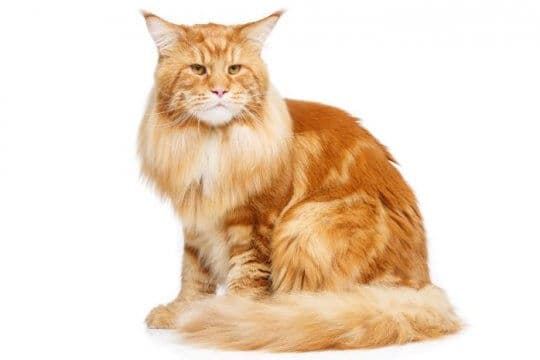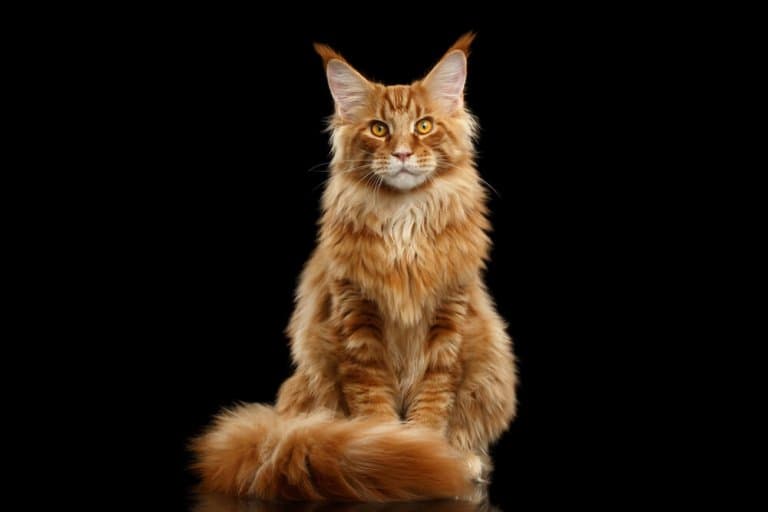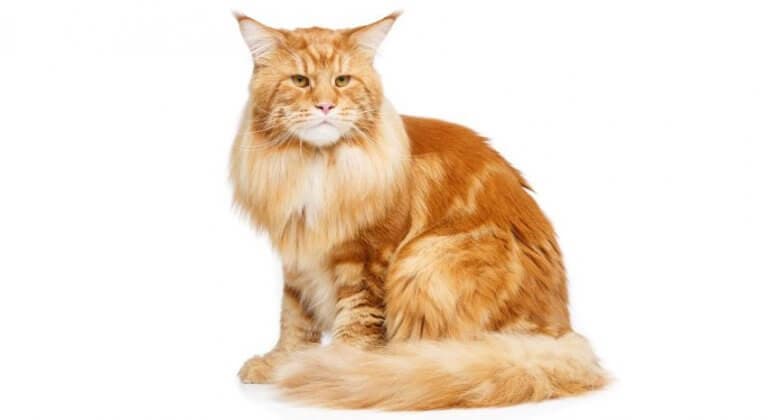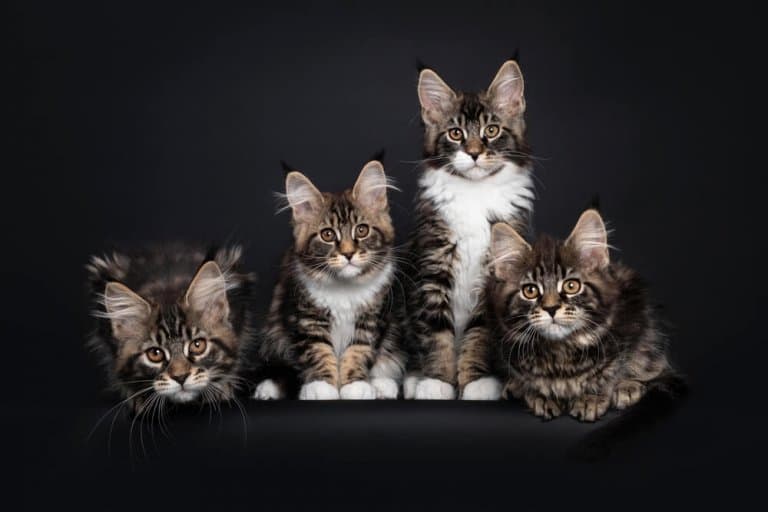
maine-coon
Gregarious, kind, intelligent, family oriented
Overview
Origin
United States
Life Span
9-15 years
Height
10" to 16"
Weight
9 to 20 pounds
Group
Large Longhair
Price
$400 to $2,000
History

As you might have guessed, the Maine Coon cat is a native of the state of Maine. Endemic to the United States of America, this breed probably originated in the 1850s, when long-haired cats were brought to America and mated with local short-haired cats. The result was a hearty, healthy, large cat with incredible hunting prowess; a heavy, shaggy coat; and a long, flowing tail.
The breed was exhibited at cat shows throughout the late 19th century. Farmers who prized these cats for their outstanding ability to keep barns and outbuildings free from rodents held their own competition, called the Maine State Champion Coon Cat contest at the Skowhegan Fair.
Maine Coon cats fell out of fashion during the early 20th century, when more exotic long-haired cat breeds such as Persians came to the United States. The breed declined until the 1950s, with some people believing the Maine Coon might have even become extinct.
Maine Coon cat aficionados Alta Smith and Ruby Dyer founded the Central Maine Cat Club (CMCC) in 1953 to preserve the breed for future generations. In an effort to increase awareness about the breed, the CMCC posted cat shows and exhibitions that featured photographs of Maine Coon cats. The CMCC created the first written breed standards for Maine Coon cats, helping this unique breed regain popularity.
Ethelyn Whittemore of Augusta, Maine, whose family had continued casually breeding Maine Coons during the breed's time of unpopularity in the U.S., founded a Maine Coon cattery and kept written breeding records of her cats. Her cats were often winners at CMCC shows.
The Maine Coon Cat Club formed in 1973, with a goal of helping the breed achieve recognition by the Cat Fanciers' Association. In May 1975, the CFA granted Maine Coon cats provisional status; the Maine Coon was approved for championship status in 1976. Today, Maine Coon cats are recognized by all major cat registries.
Care

Nutrition
Maine Coon cats have no special nutritional needs. However, it is worth noting that these large cats need a high-protein diet, and their daily caloric needs can be far higher than that of a smaller cat. We recommend feeding your Maine Coon cat a fresh diet or offering a high-quality commercial brand that lists real fish or meat as the number one ingredient.
Grooming
The Maine Coon has a thick, dense double coat with a silky soft undercoat. The coat needs thorough brushing at least two to three times a week to prevent matting. Some Maine Coons might need daily brushing. Your cat will appreciate the regular grooming sessions and view them as an additional opportunity to bond.
Exercise
Maine Coon cats are playful, but they are equally fond of lounging. Too much inactivity can lead to obesity over time. Encourage your Maine Coon cat to play using feather wands and fishing pole toys, tossed balls and fuzzy mice, and laser pointers (never shine the light in their eyes and prevent frustration by giving them a real toy to "catch" at the end of the game). If possible, consider teaching your Maine Coon to walk on a leash and secure harness. The more activity your cat gets, the better their health is likely to be for the long-term.
Health
Maine Coon cats are generally very healthy. Most pedigreed cats have certain genetically linked health conditions known in the breed. For the Maine Coon, the most common include feline hypertrophic cardiomyopathy, hip dysplasia, and spinal muscular atrophy. Reputable breeders take care to screen adult cats prior to breeding them, which minimizes the likelihood that they will pass these problems on to their kittens.
Breed Standard

Body
Maine Coon cats are muscular, well proportioned, and rectangular, giving the impression of overall balance. Male Maine Coons are typically larger than females. It's common for a male to achieve a weight of 20 pounds or more.
Head
The medium-width head is a touch longer than it is wide. The medium-length muzzle has a visibly square shape. The chin is strong and firm, and in profile, chin depth appears squared, creating a 90-degree angle.
Eyes
The Maine Coon cat has large, expressive oval-shaped eyes that slant slightly toward the outer base of the ears. The eye color complements the coat’s color.
Ears
The ears are large with wide bases that taper to pointed tips. They are set approximately one ear's width apart at the base, and have ample furnishing. Ear tufts are desirable.
Color
Maine Coon cats come in every color and pattern other than chocolate, lavender, and the Himalayan pattern.
Coat
Maine Coon cats have a heavy and shaggy double coat that consists of an undercoat and longer guard hairs over the top. The coat has a silky texture and falls smoothly. The tail is long and flowing, and a prominent rough on the chest is desirable.
Tail
The long tail is wider at the base, tapering toward the end. A luxuriant, flowing plume is desirable.
Legs & Paws
The legs are substantial, and of medium length, well proportioned in comparison to the body. The forelegs are straight, and the back legs appear straight when viewed from behind. Maine Coon cats have large, rounded paws that are well-tufted. Polydactyl Maine Coon cats (those with extra toes) are accepted in shows sanctioned by The International Cat Cat Association (TICA).